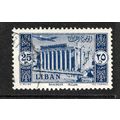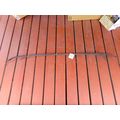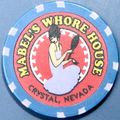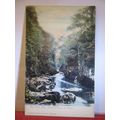Bus - Dr Church's London to Birmingham Steam Coach 1833 - Athena postcard c1970s
- Condition : Used
- Dispatch : 2 Days
- Brand : None
- ID# : 180225314
- Quantity : 1 item
- Views : 325
- Location : United Kingdom

- Seller : justthebook (+1703)
- Barcode : None
- Start : Sun 28 Apr 2019 16:48:32 (BST)
- Close : Run Until Sold
- Remain : Run Until Sold
More Listings from This Seller view all
Seller's Description
- Postcard
- Picture / Image: Dr. Church's London to Birmingham Steam Coach built in Birmingham 1833
- Publisher: Athena International, London - c.1970s (9094)
- Postally used: no
- Stamp: n/a
- Postmark(s): n/a
- Sent to: n/a
- Notes / condition:
Please ask if you need any other information and I will do the best I can to answer.
Image may be low res for illustrative purposes - if you need a higher definition image then please contact me and I may be able to send one. No cards have been trimmed (unless stated).
------------------------------------------------
Postage & Packing:
Postage and packing charge should be showing for your location (contact if not sure).
No additional charges for more than one postcard. You can buy as many postcards from me as you like and you will just pay the fee above once. Please wait for combined invoice. (If buying postcards with other things such as books, please contact or wait for invoice before paying).
Payment Methods:
UK - PayPal, Cheque (from UK bank) or postal order
Outside UK: PayPal ONLY (unless otherwise stated) please. NO non-UK currency checks or money orders (sorry).
NOTE: All postcards are sent in brand new stiffened envelopes which I have bought for the task. These are specially made to protect postcards and you may be able to re-use them. In addition there are other costs to sending so the above charge is not just for the stamp!
I will give a full refund if you are not fully satisfied with the postcard.
----------------------------------------------
Text from the free encyclopedia WIKIPEDIA may appear below to give a little background information (internal links may not work) :
*************
William Church (circa 1778–1863) was an American inventor who patented a typesetting machine in 1822, generally considered the first.
While living in Boston, he patented the Church Typesetting Machine in England, consisting of a keyboard on which each key released a piece of type of the corresponding letter stored in channels in a magazine.[2]
At some time after this, he moved to Bordesley Green near Birmingham in England, presumably to promote his patent. He was a prolific inventor, taking out numerous patents for methods of button making, nail making, metal working, smelting iron, spinning and other branches of engineering. In 1824 he patented a printing machine which positioned the paper sheets more accurately.
He turned his attention to steam engines, with a patent in 1829 for marine engines and associated equipment, and another in 1830 for an improved furnace. He patented his first steam carriage in 1832. This does not appear to have been built, but a further patent in 1835 led to the formation of the London and Birmingham Steam Carriage Company. The company prospectus describes their vehicle of 60 hp, capable of carrying a load of 15 tons at a rate of 15 miles an hour.
The Science Museum has an engraving by Josiah Allen [3] which shows it as a large three-wheeled vehicle with passenger compartments front and rear similar to conventional stagecoach bodies, with seating on top, and the driver mounted high at the
front operating a tiller for steering. The central part contained the mechanism. It would seem however that this was not the vehicle which was eventually built. Although some accounts suggest that it operated on a daily basis between London and Birmingham, Prosser [4] suggests that it never in fact completed a journey, and the company was wound up.
Although a number of steam powered coaches were tried between 1820 and 1840, they were extremely unpopular. With various impediments from excessive tolls on the turnpikes to virtual sabotage, prospective passengers were unnerved by being so close to the boiler. In the end, the railway, with its smooth running track and increasing speed, put an end to them.
In 1838 he built a steam locomotive which had various names but was most notorious as the "Surprise" which was tried unsuccessfully in the early days of the Lickey Incline in England.
Listing Information
| Listing Type | Gallery Listing |
| Listing ID# | 180225314 |
| Start Time | Sun 28 Apr 2019 16:48:32 (BST) |
| Close Time | Run Until Sold |
| Starting Bid | Fixed Price (no bidding) |
| Item Condition | Used |
| Bids | 0 |
| Views | 325 |
| Dispatch Time | 2 Days |
| Quantity | 1 |
| Location | United Kingdom |
| Auto Extend | No |



 for 1 item(s)
for 1 item(s)
















